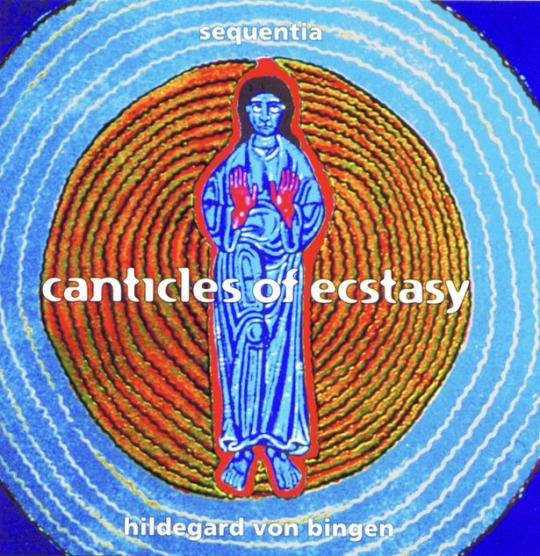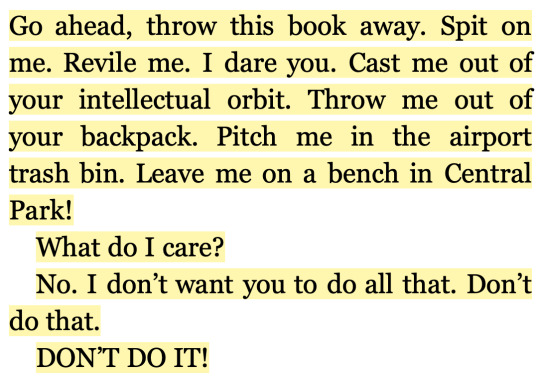#canticles
Text

Judge Holden by Rob Wood (2021)
“The judge is clearly no ordinary mortal, but at times it is suggested that he is more of a god than a demon. Sitting half-naked in front of the fire, the judge is described as a "great pale deity" (92). Later, the judge appears as a statue of some godlike being or idol. His eyes, like a sculpture's, are "empty slots" (147). Sitting on the ground with "his hands rested palm down upon his knees," the judge seems to be engaged in deep meditation 147). Rick Wallach argues that here the judge " incarnates the attributes of an oriental deity." Specifically, "the judge's poses suggest Shiva," whose "visage, like Holden's, is always serene amid the carnage he engenders" (128-29). The men seated around the judge grow wary of this meditative state, "so like an icon was he in his sitting that they grew cautious and spoke with circumspection among themselves as if they would not waken something that had better been left sleeping" (147). The implication is that the men grow fearful in the judge's presence, because they sense something otherworldly and malevolent.
The judge is situated somewhere between the demonic and the godlike, a position that corresponds to the Gnostic view of the god of this world. As Hans Jonas explains, the Gnostics believed that demons known as archons "collectively rule over the world" and "are also creators of the world, except where this role is reserved for their leader, who then has the name of demiurge" and "is often painted with the distorted features of the Old Testament God" (43-44). The human spirit is "a portion of the divine substance from beyond which has fallen into the world; and the archons created man for the express purpose of keeping it captive there" (44). The demiurge and his archons conceal the existence of the divine source, or the alien God, in order to keep human beings imprisoned in the cosmos. Thus Gnostic theology identifies the biblical God, Yahweh, as a demon, responsible not only for the creation of the world but also for the obscuration of divine Reality. By conflating the creator God and the devil into one entity, Gnostic theology creates a new kind of deity, whose simultaneously demonic and godlike characteristics are reflected in the multifaceted enigma that is Judge Holden.
In "Gravers False and True: Blood Meridian as Gnostic Tragedy," Leo Daugherty argues that "gnostic thought is central to Cormac McCarthy's Blood Meridian" (159) and perceptively identifies the judge as one of the Gnostic archons, or perhaps even the demiurge himself. Daugherty writes that like the "archons, Holden also possesses all the other characteristics of Yahweh as the Gnostics saw him: he is jealous, he is vengeful, he is wrathful, he is powerful and - most centrally - he possesses, and is possessed by, a will" (163). The "Earth is the judge's" (164), writes Daugherty, and, indeed, the judge is described as seeming "much satisfied with the world, as if his counsel had been sought at its creation" (140). Christopher Douglas draws attention to McCarthy's use of "as if," arguing that it "marks the failure of traditional realist language to evoke the larger theological design behind the events of the novel and the impossibility of linguistically imagining the design that McCarthy suspects must lurk behind the amoral nothingness of the world" (13). Thus, far from dismissing the judge's participation in the creation of the world as a hypothetical fantasy, McCarthy's "as if" actually gestures toward the ineffable and unutterable reality of this vision.
Sitting in a saloon, the judge is depicted "among every kind of man, herder and bullwhacker and drover and freighter and miner and hunter and soldier and pedlar and gambler and drifter and drunkard and thief," but though he "sat by them," he remained "alone as if he were some other sort of man entire" (325). Once again, we may apply Douglas's reading to McCarthy's characteristic usage of "as if," identifying it as a linguistic marker pointing to a "larger theological design" rather than a simple exercise in hypothetical rhetoric. Although the judge seems perfectly at home in the crazed, blood-soaked world of Blood Meridian, it is continually suggested that he is somehow not of this world. This is yet another of the judge's paradoxical attributes that can be resolved in the light of Gnostic thought. Gnostic texts often refer to the world as the "inn" in order to emphasize the concept that the pneuma lives in temporary exile from its true home. The archons can be thought of as "the 'fellow-dwellers of the inn' though their relation to it is not that of guests" (Jonas 56). Hence, just as the archons inhabit the realm of the manifest world without being human, the judge walks among men while being no ordinary mortal. Furthermore, the judge's existence is not limited to the so-called Wild West of the 1850s, for he was also "among the dregs of the earth in beggary a thousand years and he was among the scapegrace scions of eastern dynasties" (325). This suggests that the judge cannot be limited by time, place, or social hierarchy; his existence stretches back to distant times, distant lands, and infiltrates all levels of human society, from beggar to king.
Most disturbingly, the judge seems to possess no beginning and no end. In a fit of ether-induced delirium, the kid experiences a revelation regarding the judge's mysterious lack of origins: "Whoever would seek out his history through what unravelling of loins and ledgerbooks must stand at last darkened and dumb at the shore of a void without terminus or origin and whatever science he might bring to bear upon the dusty primal matter blowing down out of the millennia will discover no trace of any ultimate atavistic egg by which to reckon his commencing" (310). The kid's vision reveals that the origin of the judge cannot be uncovered through genealogy, nor scientific enquiry; any attempt to do so will only lead one back to the primordial void, the chaos that precedes the existence of the cosmos in the creation myths of countless traditions. Similarly, the judge has no final destination; in the final paragraph of the novel he is dancing an eternal dance, reminiscent of Shiva's cosmic dance of destruction: "He never sleeps, the judge. He is dancing, dancing. He says that he will never die" (335). Ordinary sleep is a minor prelude to the great sleep of death and the immortal judge is eternally wakeful.
Harold Bloom comments on the judge's lack of origins in How to Read and Why, but he curiously argues against a Gnostic interpretation of the passage. Despite the fact that Bloom identifies McCarthy as a Gnostic - "Faulkner is a kind of unknowing Gnostic; West, Pynchon, and McCarthy in their different ways are very knowing indeed" (237) - and is prepared to admit that "McCarthy gives Judge Holden the powers and purposes of the bad angels or demiurges [sic] that the Gnostics called archons," he inexplicably goes on to insist that McCarthy is actually telling "us not to make such an identification," because "any 'system,' including the Gnostic one, will not divide the Judge back into his origins. The ultimate atavistic egg' will not be found" (Modern Critical Views 4). I agree with Bloom's assertion up to a point, namely that the supernatural nature of the judge is such that he surpasses the limitations of the human mind and thus cannot be limited to any one system of thought. Nevertheless, certain aspects of the judge's nature may be illuminated by references to the various spiritual and philosophical traditions that have attempted to address the problem of evil. This is the line of argument adopted by Steven Frye, who argues that the judge's purported lack of origins should not discourage us from interpreting the literary figure in the context of various systems and traditions, including, but not limited to, "Judeo-Christian cosmology and typology, scientific materialism with its often purely atheist implications, the continental philosophy of Friedrich Nietzsche, philosophical nihilism, and the fascinating conceptions of ancient Gnosticism." Frye argues that Judge Holden "is by no means a patchwork creation of competing philosophical configurations, but a distinctive artistic embodiment of darkness that stands apart but nevertheless draws on these various perspectives" (Understanding Cormac McCarthy 79). He adds that "it is perhaps more fruitful to consider that various notions of evil, literary or philosophical, partially illuminate rather than define his nature" (91). I would argue that although Gnosticism is not the definitive system through which one may arrive at an understanding of the judge, it is nevertheless a particularly useful one due to its preoccupation with the evil manifest in creation.
Furthermore, McCarthy subtly alludes to the judge's connection with Gnostic archons in his esoteric subheading to chapter 15, "The Ogdoad" (204). The heading refers to a scene in which the Glanton gang stumbles upon eight decapitated heads arranged in a circle. "The heads were eight in number . . . and they formed a ring all facing outwards. Glanton and the judge circled them and the judge halted and stepped down and pushed over one of the heads with his boot" (220). According to A Dictionary of Gnosticism, the ogdoad (Greek for "group of eight") is the "eighth sphere, above the seven planetary spheres" and "may be considered to be the sphere of the fixed stars, but may also be associated with the home of Sophia [the Gnostic personification of wisdom], or the demiurge, or in simpler cosmologies the home of the true God" (A. Smith 177). According to these "simpler" Gnostic cosmologies, the cosmos is ruled by seven archons, whose kingdoms are hierarchically arranged in concentric circles around the manifest world.In what is known as the "Ascent of the Soul" - a teaching common to both Hermeticism and Gnosticism - the souls of the dead must pass through the hebdomad (Greek for "group of seven"). During this process "all passions and vices are given back to the various spheres from which they were derived in the soul's original descent." Afterward, the "essential man' proceeds to the Ogdoad (Eighth) where he praises the Father with those who are there" (Pearson 279). In other words, the perfected spirit ascends to the "eighth realm," thereby returning to its divine source. By knocking over the eighth head, the judge reduces the ogdoad of the alien God to the hebdomad of the archons. If one considers the ogdoad to be the realm of the alien God, then the judge's action is symbolic of his denying transcendence to those who would seek to escape from the manifest world through spiritual development.
The very title of "the judge" carries connotations of biblical judgement, a concept that strengthens his resemblance to the demiurge and the archons. Harold Bloom writes that Judge Holden "seems to judge the entire earth" and the name Holden "suggests a holding, presumably of sway over all he encounters" (Modern Critical Views 4). The judge seems to be obsessed with bringing every animate and inanimate thing in creation under his jurisdiction. When asked why he shoots and stuffs birds, catches butterflies, presses leaves and plants between the pages of his ledger book, and sketches artifacts - often destroying the originals after their image has been recorded - the judge replies, "Whatever in creation exists without my knowledge exists without my consent" (198). This statement would be absurd if uttered by a mortal man, but chilling if uttered by an archon bent on keeping all things imprisoned in the fetters of manifest existence.
This reading also illuminates the judge's desire to have "the existence of each last entity . . . routed out and made to stand naked before him," so he might be "suzerain of the earth." When asked what a suzerain is, the judge replies, "He is a special kind of keeper," one who "rules even where there are other rulers," because his "authority countermands local judgements" (198). Once again, the judge's emphasis on judgment links him significantly to a Gnostic portrayal of Yahweh. Similarly, his insistence that he be the supreme ruler recalls Yahweh's commandment: "Thou shalt have none other gods before me. . . . Thou shalt not bow down thyself unto them, nor serve them: for I the LORD thy God am a jealous God" (Deuteronomy 5:7, 9). As the Gnostics were quick to point out, Yahweh is actually unwittingly revealing the existence of another god, "For if there were no other one, of whom would he be jealous?" (qtd. in Pearson 66). Like Yahweh, the judge's insistence on being the sole ruler subtly suggests the existence of other "principalities," "powers," and "rulers of the darkness of this world" (Ephesians 6:12) with which he competes for supremacy.”
Most telling of all, however, are pronouncements the judge makes with his hands placed on the ground: "This is my claim, he said. And yet everywhere upon it are pockets of autonomous life. Autonomous. In order for it to be mine nothing must be permitted to occur upon it save by my dispensation" (199). Robert Jarrett explains that "dispensation . . . is a key term in evangelical Protestant theology, referring to the different covenants regulating the relations between Jehovah and man" (Cormac McCarthy 78). It is by such a "dispensation" that a "terrible covenant" (126) was formed between the mortal Glanton and the sinister, Yahweh-like Holden. Leo Daugherty also links this passage to Yahweh, arguing that "Judge Holden's power is not yet complete, since his will is not yet fulfilled in its passion for total domination" and that "this was also necessarily true of the Gnostic archons, just as it was true of the Old Testament Yahweh" (163). According to Gnostic thought, the demiurge and his archons must exercise their tyrannical rule in order to prevent the trapped fragments of the divine from returning to their source, for if all divine fragments were liberated, there would be nothing left to animate the dead matter of the cosmos. As Kurt Rudolph explains, "the powers which rule the world, the Archons . . . try to impede the [spirit's] return in order to prevent the perfecting of the world of light and thus protract the world process" (172). The archons are powerless in exerting their dominion over those who possess gnosis, or what the judge calls "pockets of autonomous life." Thus the judge knows that he will never be suzerain of the cosmos unless he can keep every living thing imprisoned in the manifest realm.” - Petra Mundik, ‘A Bloody and Barbarous God: The Metaphysics of Cormac McCarthy’ (2016) [p. 35 - 40]

“Satan, avenging angel, albino monstrosity, or hyperrealist of paradise lost, the judge remains the most morbidly captivating character in Blood Meridian. He is reminder alone that the American west was at times a holocaust of Manifest Destiny and white supremacy, the devil's genocidal shibboleths.” - Kenneth Lincoln, ‘Cormac McCarthy: American Canticles’ (2010) [p. 87]
#mccarthy#cormac mccarthy#blood meridian#judge holden#bloody and barbarous god#mundik#petra mundik#gnosticism#harold bloom#metaphysics#shiva#demiurge#archon#satan#devil#kenneth lincoln#canticles#manifest destiny#shibboleth
54 notes
·
View notes
Text
✨🦋Canticles for Cyborgs🦋✨ is a mix built around a special kind of vocal. it's about how we have been singing for thousands of years and will continue to sing whatever strange future may await us.
I usually start these mixes based on a very specific musical or aesthetic idea I notice and then start collecting songs with the same vibe. so it sometimes takes months or years until they start coming together for me, but the patience it requires is also rewarding. I love working on things over long spans of time and finding links and familiarities where I wouldn't have suspected them at first. It's my little way of making sense of the world 🕯

#mix#mixtape#canticles#cyborgs#medieval#artwork#album art#digital folklore#hyperfolk#music#SoundCloud
3 notes
·
View notes
Video
youtube
O vis eternitatis

O Vis Eternitatis -Hildegard Von Bingen
1 note
·
View note
Text
Amateur Natural Tit Cougar
Pajaritos pillados teniendo sexo en publico :v
Crying pain bdsm Adrian Maya is a tastey piece of butt with her
Casey Calvert hot sex
Fleshly and gratifying gay massage session
ROCK PAPER SCISSORS CHALLENGE LOSER GETS A PANTSING
CHICOS MOSTRANDO SUS PENES Y CULOS EN WEBCAM
Indian Bhabhi Veenita Sharma Suck And Fuck Ass with Husband Friend After husbnd going to office
Very beautiful Chinese prostitute likes to talk
Coed schoolgirl cosplay hot anal sex
#gonagra#events#pyrovanadate#lacrym#subauditur#versicule#palazzos#figeter#Canticles#Islamabad#chemoreceptivities#Tessie#clubbable#unremarkable#ergotization#egests#beam-end#oestrone#policlinic#redshirts
0 notes
Text
The History of Christmas Carols - Historic Mysteries
The History of Christmas Carols – Historic Mysteries
https://www.historicmysteries.com/history-of-christmas-carols/

View On WordPress
#1223#129 AD#1400s#1818#Austria#Bishops#canticles#Carols#Christianity#Christmas#Comas of Jerusalem#Europe#Father Joseph Mohr#France#Franz Xavier Gruber#Germany#Gloria in Excelsis#Greccio#Greek Orthodox#Hymn of the Angels#Italy#Jesus#John Audelay#Latin#Mariapfarr#Middle Ages#pagan#Rome#Shepherds#Silent Night
1 note
·
View note
Text
wtf is dracula daily?
i’ve seen a couple people ask this question on my posts about it, so i thought i’d go ahead and clear it up here!
ok so, the classic horror novel “dracula” is an epistolary novel - that means it’s told via letters, diary entries, ship logs, and news articles. (technically the term “epistolary novel” refers to works told solely through letters or emails, but many have expanded it to mean any work that is told via in-universe documents, hence why diaries and logs often get included as well. “frankenstein” is another classic example; the whole framing device is robert walton is recounting the story he heard from victor to his sister via letter. a modern example would be “several people are typing,” which is told via slack messages, or “the perks of being a wallflower,” which is told via letters from charlie to his anonymous pen pal, which is functionally more like you’re reading his diary.)
because of the nature of the narrative, we actually know the exact day nearly everything in dracula happens - the letters, news articles, diary entries, etc. are all dated.
“dracula daily” is a substack project where the novel is broken up into parts, with people who are subscribed to the project getting emails every day something in dracula happens - for example, the novel opens with jonathan harker’s journal entry on may 3, so on may 3, subscribers are emailed that entry. the action of dracula takes place from may 3 - november 6, plus an epilogue set some years later. the project started in 2021 (i think), but fucking BLEW UP in 2022, and they’re doing it again this year! lots of us are very excited - especially people like me who fell behind last time.
why not just read the book?
valid! due to some parts of dracula being told out of chronological order, dracula daily does reorder some things. for example, the first section of dracula is told entirely from jonathan harker’s pov, then the second section switches the pov to mina murray. their sections have some overlap in the timeline, so dracula daily jumps back and forth between their perspectives.
if you want to read the book as bram stoker intended, dracula daily may not be for you. but for a lot of people (myself included!), it breaks up a very long text into easily digestible chunks (....mostly. there is one entry that is 10k words), and the fact that it’s a big project means there are a lot of people reading along with you.
i think there’s also something valuable about experience the slow revelation of wtf is going on along with the characters. the book which you might otherwise get through in a few days is stretched out into months of suspense and agony as you wait for the other shoe to drop, and it’s great.
plus, the whiplash between “jonathan harker’s neverending horror” vs “lucy is basically on the bachelorette” that you get in dracula daily is very very funny.
how do i sign up?
right here! and if you sign up and fall behind in the emails, no worries - the dracula daily website posts past entries so you can catch up.
what if i prefer audiobooks?
have i got great news for you!
like i mentioned before, i couldn’t keep up with the emails last year. part of it is that it is much easier for me to focus on an audiobook or keep up with a podcast than it is for me to sit down and read, especially with longer entries.
this year, there is going to be a podcast titled “re: dracula” that was inspired by dracula daily. every episode will be a dracula daily entry, with a full voice cast! (seriously, if you listen to british podcasts, you will recognize some of these names. the magnus archives and wooden overcoats girlies are WINNING.) you can find that here.
there is also a podcast called “cryptic canticles” that has an already-completed audiodrama of dracula that i’m told is also extremely good, and was also broken up by date. you can find that here.
why do i keep hearing about paprika/the boyfriend squad/lizard fashion/cowboys?
you’ll see.
oh god am i gonna hear about this nerd shit for the rest of the year
yes. sorry.
3K notes
·
View notes
Text
Title: Shades of Tourmaline
Fandom: Detective Conan | Magic Kaito
Author: @cleflink
Artist: @bakathief
Pairing: Kaishin preslash
Word count: 13580
Rating: G
A/N: We have been working on this collab for THREE YEARS folks. And now it's finally here! We have loved creating this world together and we very much hope that you will all enjoy as well! :)
Summary:
There was a human in Kaito's forest.

#dcmk#kaishin#detective conan#kaito kid#kaitou kid#bakathief#cleflink#Collab#kaito kuroba#kuroba kaito#conan edogawa#edogawa conan#fantasy#fae#fae folk#the pandora canticle#fanfic#traditional art#mk1412#magic kaito#my art#after 3 years it is finally live!#please enjoy!
169 notes
·
View notes
Text










When your friend brought you home the other night, I didn’t see a coward. Just a man beat up too often and for too long, maybe. You’re not yellow. You’re just blue.
Endeavour Morse: brave + terrified
#itv endeavour#endeavour#endeavour morse#shaun evans#perioddramagif#my gifs#this poor man#he's always so scared and upset which is such a great character trait bc of course! any real person would be!#and despite it all nothing frightens him more than the thought of telling people how he feels and being rejected#he's just like me fr#morse#monica#morse x monica#fugue#neverland#prey#harvest#canticle#coda#colours#muse
370 notes
·
View notes
Text

Lestat and not caring at all, Blood Canticle
132 notes
·
View notes
Text

I know I don't post much on here anymore, I really want to go back to making art, but I don't have the motivation or time to do so.
Anyways, until I make something I'm actually proud of, have this Claudia sketch I don't entirely hate
#artsits on tumblr#traditional art#anne rice#iwtv#op art#the vampire chronicles#interview with the vampire#lolita fashion#victorian inspired#gothic#gothic art#is this coquette? i feel like it might be#also im currently reading blood canticle#its so weird... like#what the fuck lestat#also i dont like mona#she annoyed me so much when i was reading the witches and NOW SHE'S A VAMPIRE TOO???HELLO??#well anyways#i hope this doesnt flop#but it might since i went on a hiatus lol
97 notes
·
View notes
Text

“The misfits ride on without farewell and encounter skin-dressed ciboleros returning with dried buffalo meat from the plains and ride on, "each passing back the way the other had come," as all travelers endlessly pursue inversions on other men's journeys. Such are the pointless peregrinations of amoral men without women, children, compassion, or reason, save hunting the skins and meat and scalps of living beasts and unlucky victims. The mindless violence begins to circle back on itself, the tale's low comic dialogue mute.” - Kenneth Lincoln, ‘Cormac McCarthy: American Canticles’ (2010) [p. 83]
3 notes
·
View notes
Text

Doctors of the Church Hub
"...And in the center of the wall the First Resurrection of the Lord Bright, holding the Holy Amulet above His head."
Finally, Lord Bright!! A Canticle For Bright...
#scp#scp hub#scp foundation#scp fandom#scp fanart#scp 963#scp doctors#scp dr jack bright#dr jack bright#scp dr bright#dr bright#jack bright#Doctors of the Church#A Canticle For Bright#Lord Bright
104 notes
·
View notes
Text
blocking everyone stupid enough to yell at me in the tags because their favourite song isnt on that simon and garfunkel poll. ITS THEIR ALBUMS GENIUS ITS A POLL FOR YOUR FAVOURITE ALBUM ARE WE REALLY NOT GETTING THIS
#they dont even have a song called parsley sage rosemary and theme ITS CALLED SCARBOROUGH FAIR/CANTICLE#PAY ATTENTION
59 notes
·
View notes
Text
Say to the fainthearted: Take courage! The Lord our God is coming to save us.
97 notes
·
View notes
Text

This is from the season 3 extras of the Endeavour Complete Series DVD set. It shows Shaun Evans apparently being rigged up with a SnorriCam, but only 'Canticle' from season 4 seems to have used a shot like this (when Endeavour has been drugged at the end of the episode). Does anyone know what episode this behind the scenes shot was for? It looks like it should be for 'Prey', but there wasn't a shot like this in the episode that I can recall.
46 notes
·
View notes
Text
Questioner: If I were to visit Canticle in the subastral, what would that look like?
Brandon Sanderson: I think it'd be pretty violent, and a source of constant shaking and tremors.
Questioner: Would it be dangerous?
Brandon Sanderson: Yeah, I think it'd be dangerous.
#the sunlit man#ssp4#cosmere#cfsbf#root#wob#brandon sanderson#shadesmar#the cognitive realm#canticle
38 notes
·
View notes